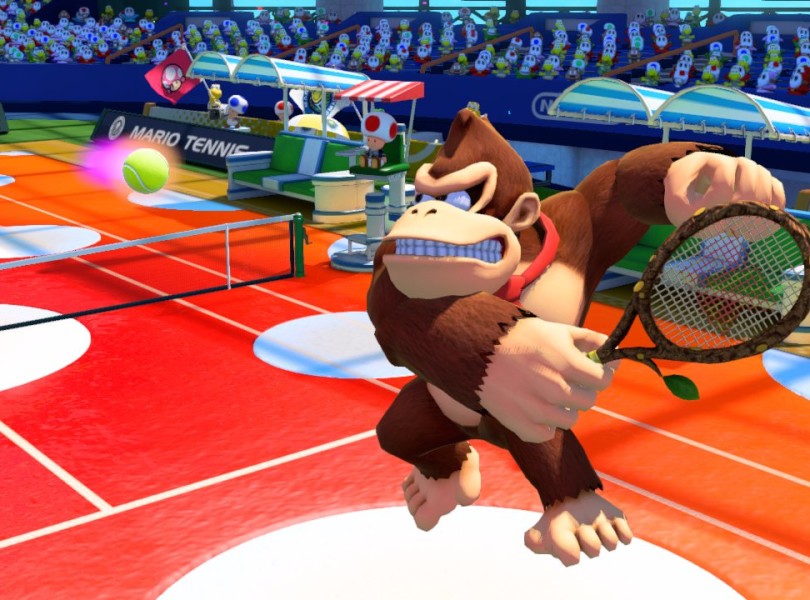Court in the act

The most fun to be had comes from the unlockable courts. The main feature of each of one creates a challenge to overcome through different shot types and techniques. Sliding around on the Ice Court forces you to refine your technique, while the Carpet Court will ramp up the ball speed. The Morph Court, which lets you change the surface on your opponent’s half of the arena with chance or jump shots, is perfect for multiplayer fun or planting the seeds of family feuds.
Mega Rally is a rather humdrum affair, involving an oversized ball that you can hone your skills with while maintaining a rally with your opponent. Playing the CPU in this mode is pointless until you’ve unlocked the pro and ace level, as they just can’t keep up, bringing your rally to an abrupt end after a smattering of shots.
The most mystifying mode is the Knockout Challenge. Playing either solo, or with your amiibo along for the ride, you work your way through a string of opponents that gets progressively more difficult. And that’s it. Sure, your amiibo can get some solid training time in, but as the calluses start to form on your once soft, tender hands, and you find yourself googling the symptoms of carpal tunnel, you’ll begin to wonder if this is some kind of metaphor for the futility of life, or whether you’ve been an unwitting test subject in a new kind of psychological warfare.
If you have to quit out to facilitate your other functions as a human being – like earning a living, eating, and, sleeping – there’ll be no saving of progress for you. Because you’re weak and lack discipline. Knockout Challenge is an uninspired cycle of monotony, bereft of the whimsical charm of the previous games’ tournament mode, and ultimately unsatisfying.

The online portion is also a bit of a bust. I didn’t have a great deal of time with it prior to release as there was a specific schedule of the types of game available on the servers, but no lobbies or matchmaking with friends. After picking a game type, I was randomly paired with another player, got swiftly trounced, and that was that. It didn’t help that we seemed to be the only two people in the entire world playing online, and faced off another six or seven times, during which – against all odds – I failed to make an astounding last minute comeback and got pulverised. Over and over again.
Victories in any of the five modes will reward you with varying amounts of coins that you can use to unlock the more interesting courts, additional characters, and the star versions of the roster lineup. Alternatively, you can unlock everything by fulfilling certain prerequisites, so save your coins to bypass the more difficult challenges.

That being said, I immediately frittered away my coins on unlocking newcomers Green Sprixie Princess and the adorable Toadette. Your choice of character isn’t just aesthetic – their play styles fall into one of six categories, but the only discernable difference I noted was how much slower the beefier characters were. After lumbering around as Donkey Kong and Bowser, with balls flying past my face, I gave up and switched to Peach, but if you’re familiar with the Mario tennis games, you may prefer the benefits bestowed by the more portly athletes.
With the exception of Knockout Challenge and online play, each mode supports one to four players in singles or doubles matches. You can introduce compatible amiibo in Knockout Challenge and online. Perks are randomly allotted to the 10 skill slots as you play with them, but you can tweak them to your heart’s desire once you unlock amiibo training with your coin stash. I trained my Yoshi in Knockout mode and the going was a lot less stressful with a buddy by my side.

As fun as it would be take your sparring partner online after a bout of training to pit against a friend and their amiibo while duking it out in a doubles match, the randomised online matchmaking is going to ensure that never happens. The biggest hook for amiibo integration is oddly absent in another missed opportunity.
Mario Tennis: Ultra Smash falls short of expectations, with scant content and glaringly overlooked potential features overshadowing the solid gameplay, which carries the game, but unfortunately, not far enough.


